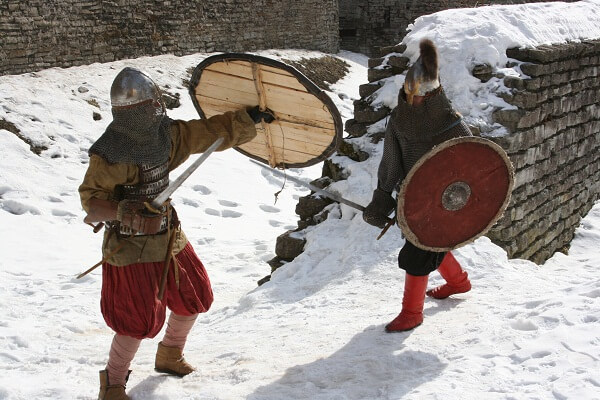When one visits Estonia (thank god we should soon be able to travel again), one can’t help but notice refrigerator magnets and other souvenirs celebrating Estonian Vikings. But were they?
Perhaps inspired by more recent history as well as Egil’s Saga, it is easy to see the Estonians as on the receiving end of Vikingdom. After all, Egill is captured by Estonians but manages to escape with a fair bit of loot, only to turn back and murder his captor and his family, as robbing a sleeping man would be an insult to said man. Even so, the story tells us two things. The Estonians were able to capture such as ferocious warrior as Egill. And he did, in fact, respect them.
It seems that on more than one occasion the proto-Estonians gave as well as they got. In Heimskringla, Snorri Sturluson relates how the Swedish King Yngvi patrols his shores for Estonian pirates in the 7th century. Eventually, he invades Estonia but is killed in battle and hastily buried there by the sea. In a later chapter, Queen Astrid of Norway escapes with her son, the future king Olaf Tryggvason, from Norway to Novgorod where her brother Sigurd holds high position at the court of the great prince Vladimir (or Volodymir or Valdimar). On their way, they are raided by Estonian Vikings, here being called Vikings in the proper sense of the word as hostile raiders and taken captive. Later, as queen brother Sigurd is collecting taxes on behalf of Valdimar, he finds Olaf being auctioned at the local market and buys him free. This latter story is set in 967 and five years later, a battle between Estonian and Icelandic Vikings off Saaremaa is described in Njál’s Saga.
Archaeological evidence also suggests plentiful contact between Norse and Estonian, reaching to before the Viking Age proper. Probably the Norse navigated along Baltic Coasts and islands before braving the more unpredictable North Atlantic. In 2008, two Viking ships full of slain warriors were discovered on Saaremaa and may have been buried their in a hurry after a fierce battle at around the year 700 CE. If these are the remains of Yngvi and his men remains a matter of conjecture, but it shows that Snorri’s tale is at least historically plausible.
So were the Estonians Vikings? Well, sort of, but that would depend on definition. It seems that to the old Norse societies, they were.


